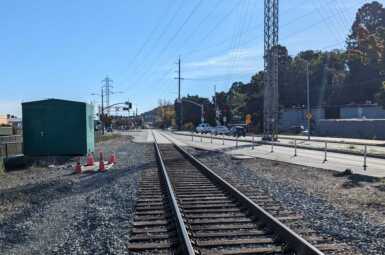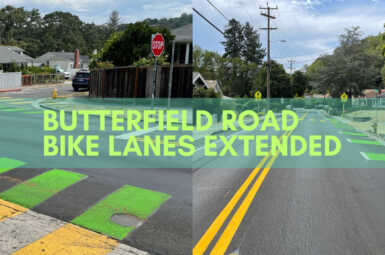Safe Routes Program Highly Rated SR2S Gets Kids Travelling Green
On a single day in Marin, 15,000 students “travel green” to school. Our Marin Safe Routes to Schools Program has been instrumental in transforming a car-dependent culture to one that embraces alternative transportation for its youth.
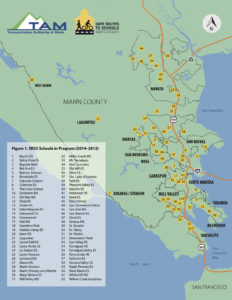 Since inception in 2000, Marin Safe Routes to Schools has gone from 5 participating campuses to 58 schools now implementing its programs. Getting the word out to more students and families has meant greater momentum, with 83 percent of those actively participating schools seeing traffic decreases of up to 30 percent.
Since inception in 2000, Marin Safe Routes to Schools has gone from 5 participating campuses to 58 schools now implementing its programs. Getting the word out to more students and families has meant greater momentum, with 83 percent of those actively participating schools seeing traffic decreases of up to 30 percent.
Reducing vehicle trips even a few percentage points during peak commute hours can have dramatic effect on decreasing traffic congestion. As an example, data indicates that the Safe Routes to Schools program removes 1,100 single-student occupancy cars from the streets in Mill Valley each day during morning commute hours.
Improving bike lanes and crosswalks is key to success. Parents reported infrastructure improvements as vital to encouraging active modes of transportation – particularly those that provide separation from vehicles. Those same parents remain reluctant to allow their children to walk or bike close to speeding cars or to cross challenging intersections.
The Transportation Authority of Marin has approved over 140 separate Safe Routes to Schools projects. The process of identifying and addressing needed improvements is lengthy, involving input from various community constituents who join Safe Routes led Task Forces. School administrators, parent Team Leaders, and city officials meet in these Task Forces to prioritize infrastructure and enforcement needs of the school community and then work with traffic engineers and public works to implement safety improvements.
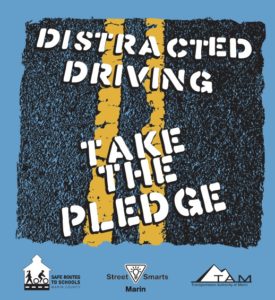 In addition to pathway and route improvements, Safe Routes to Schools provides extensive education programs. Last year, Safe Routes professional staff presented bike/ped education programs to over 9,000 students, as part of the physical education program at participating grade schools. The prime focus on safety continues into the high schools as well, where we have rolled out “Distracted Driving – Take the Pledge” campaigns to reduce the dangers of texting and reckless driving as the next generation obtains their licenses.
In addition to pathway and route improvements, Safe Routes to Schools provides extensive education programs. Last year, Safe Routes professional staff presented bike/ped education programs to over 9,000 students, as part of the physical education program at participating grade schools. The prime focus on safety continues into the high schools as well, where we have rolled out “Distracted Driving – Take the Pledge” campaigns to reduce the dangers of texting and reckless driving as the next generation obtains their licenses.
All of this works to create a safer community and encourages parents to reinforce “green travel” options with their children. Walking and biking to schools relieves traffic congestion, increases health benefits, and shows the next generation how to make “greener” choices for the environment. Further benefits include quality family time and an increased confidence in walking and biking safely each day.
Safe Routes has continued to reach further into Marin’s community – equity is a core value for Safe Routes to Schools as we work to provide egalitarian opportunities for safe, active and healthy travel for all families. In 2014, a Bi-Lingual coordinator was hired to provide better outreach to previously underserved schools. This has helped Safe Routes to identify barriers and challenges – most recently adding crossing guards and forming Walking School Buses to gain visibility and safety.
More details about the results and success of Marin County Safe Routes to Schools can be found in this recent Program Evaluation.
